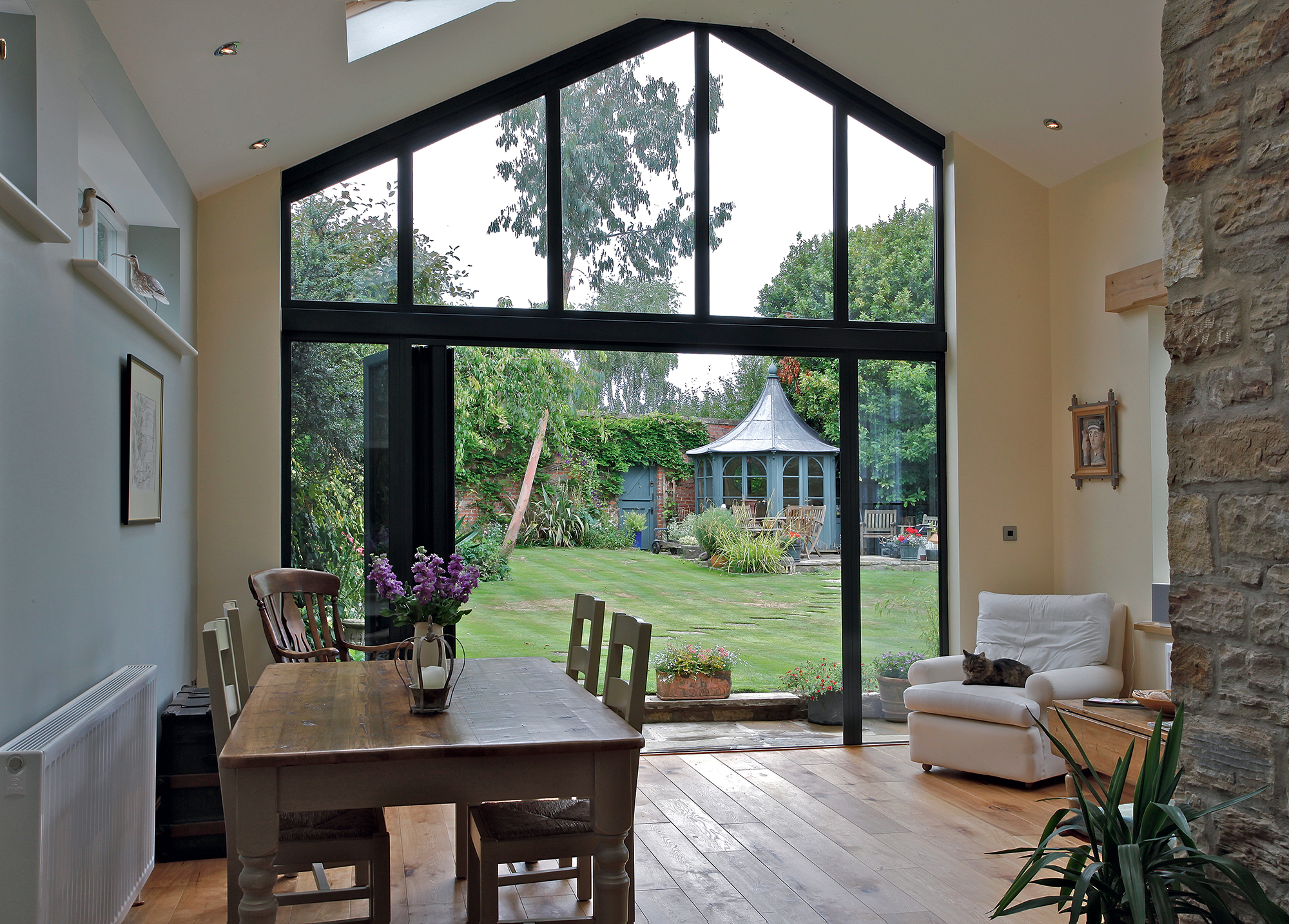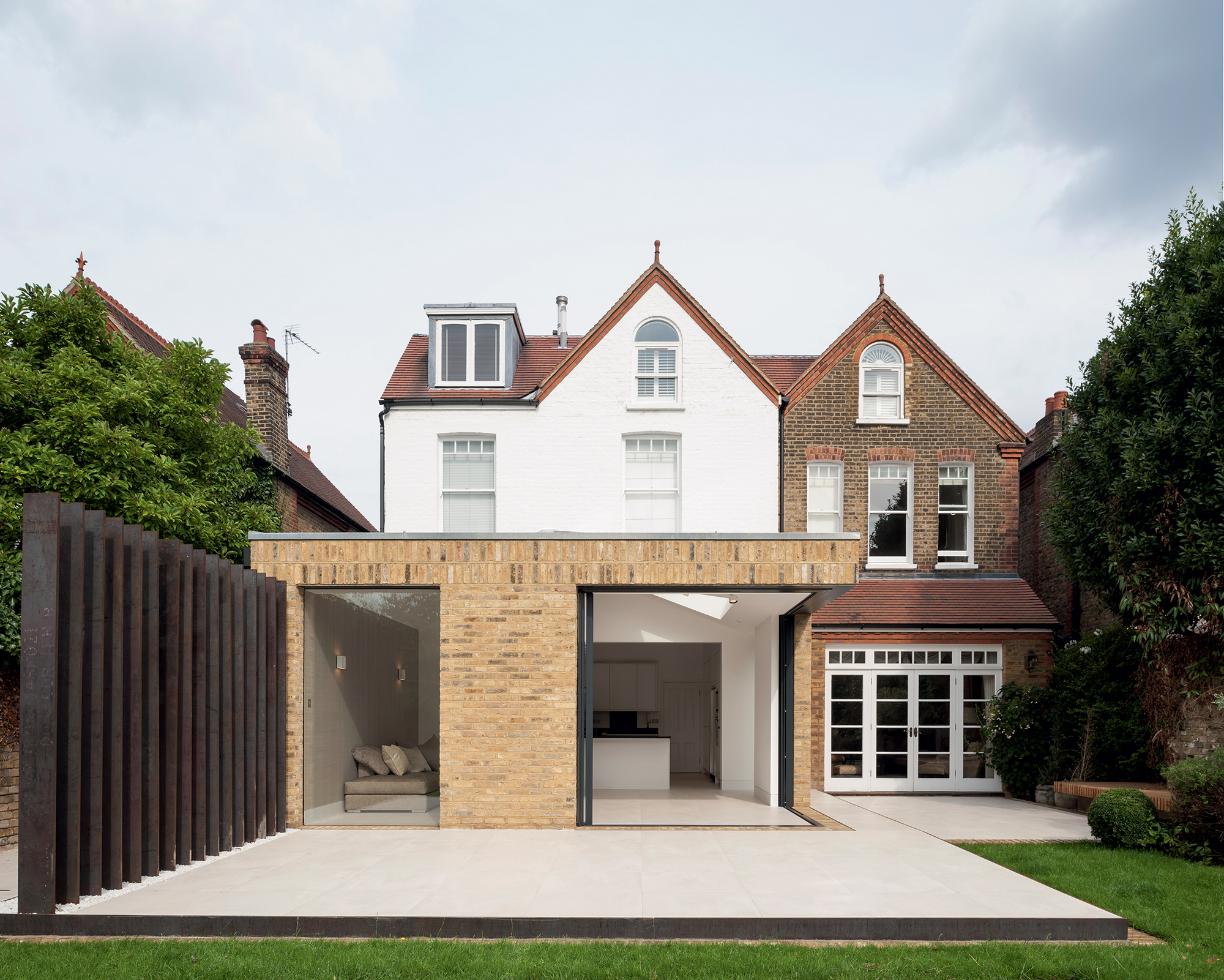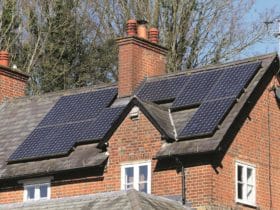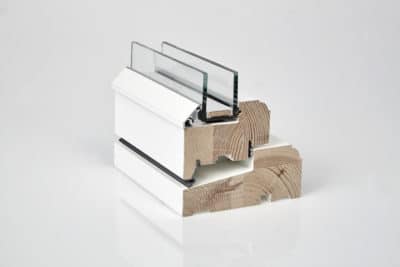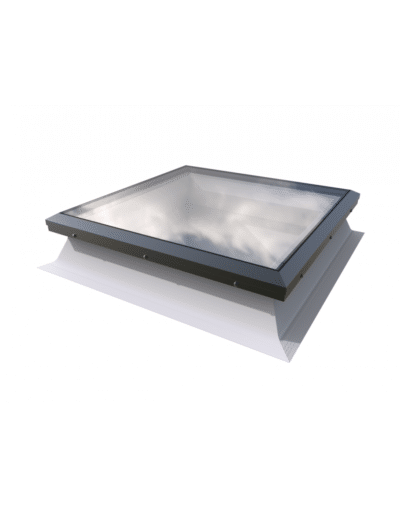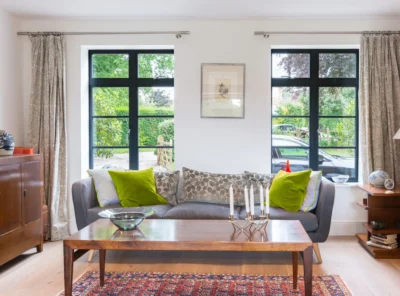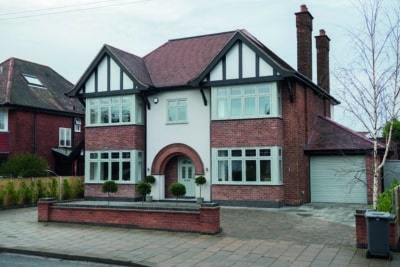Glazed Door Guide: Patio Door Styles, Costs & Considerations
Glazed doors are an integral part of most home renovations, extensions and new build projects. Good glazed door design provides a seamless connection between house and garden, while allowing plenty of daylight to flood into rooms. But not every type of door will suit your project, location and lifestyle needs.
In this article, we take an in-depth look at the practical considerations for choosing between bifold doors, sliding doors, French doors and other design-led glass door options.
Learn more: Sliding Doors vs Bifold Doors
Before you can select the best glazed doors for your home, you need to think about how you’ll be using your space – both indoors and out – and whether the local climate will have an impact on this.
“Weather conditions can be a real factor in determining your choice,” says Matt Higgs from Kloeber. “If you’re in a very exposed area, then you should go for a low maintenance material with good air permeability ratings. Consider the thickness of the frame, too, and how this will affect the view when doors are closed.”
There’s a wealth of design options available to suit different needs. Here’s what you need to consider before buying to make sure your ideal door is compatible not only with your architectural taste but also your lifestyle.
French doors
This style comprises two panels hinged on opposite sides of the frame that lock at the middle of the aperture. French doors are the preferred look in traditional properties that don’t feature large expanses of glazing.
“The size of the opening can determine which type of glazed doors will be best for the scheme,” says Rebecca Clayton from IQ Glass. “French options are better for smaller doorways.”
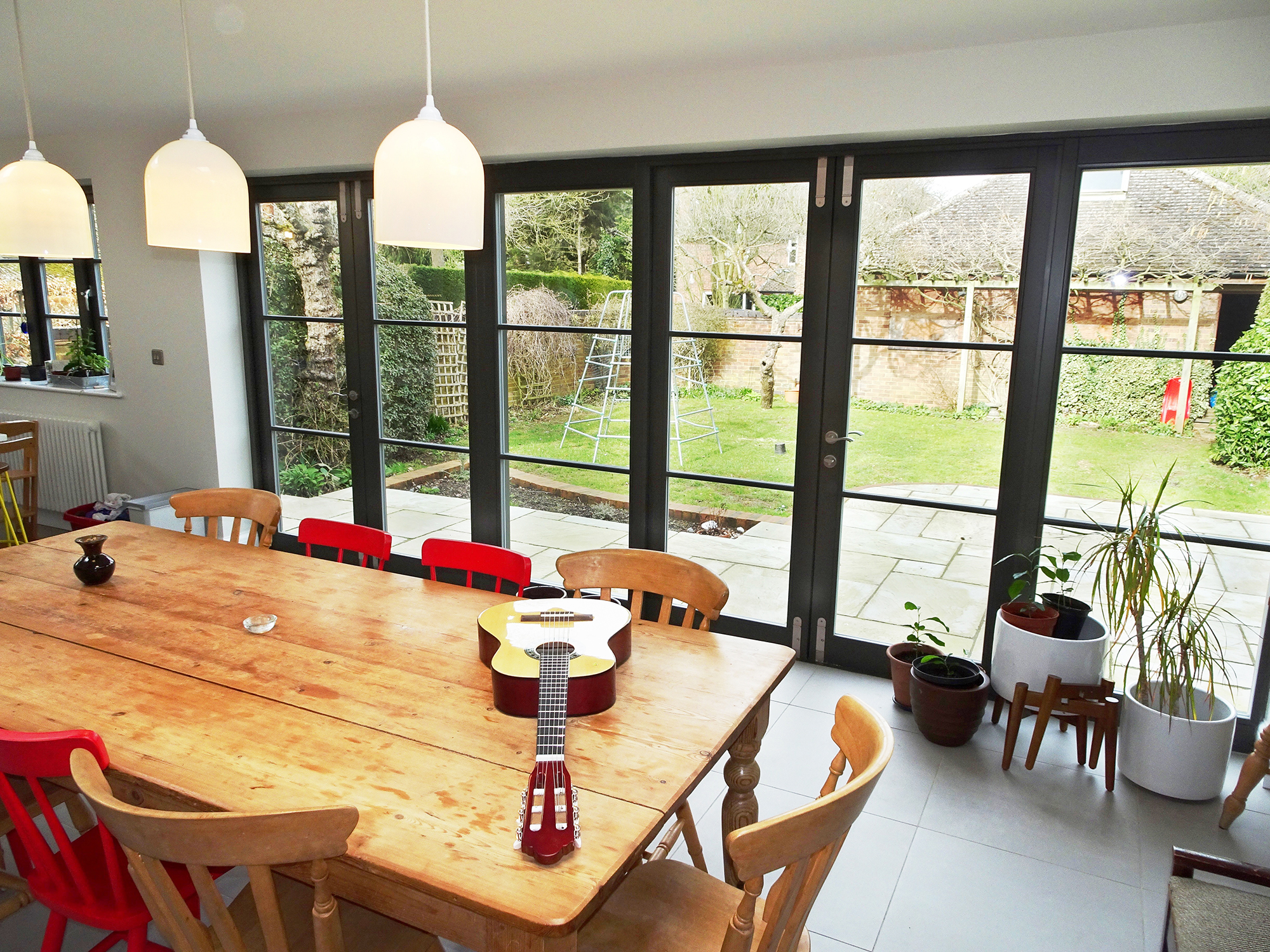
These charcoal grey french doors by Kloeber create traditional charm and open the kitchen to the garden
This design allows for easy access to the outside, with a completely clear aperture. However, the maximum opening size for standard French doors is 1.8m (two panels of 900mm) – so they can’t compete with sliders and bifolds on larger spans.
The amount of framing means your interiors may not benefit from as much daylight as they would with other choices. That said, newer models are sleeker – and you can always add fixed glazed panels either side (sidelights) or above (toplights).
French door costs start from around £500 (plus installation) for basic off-the-shelf products. Expect to pay £1,500-£2,500 (plus installation) for a good quality, made-to-measure French doorset.
Bifold doors
A long-time favourite among self builders and renovators, bifolds offer the maximum inside-outside feel when opened.
This system consists of glass panels that concertina back to stack against one another – either inwards or outwards, depending on specification – opening up to 90% of the aperture.
What’s more, in many bifold door configurations you can have an individually-operated master door. This gives you quick and convenient access when you don’t want to open the full run (such as when popping outside in winter).
“If the space you have is less than four metres wide, then bifolds might be the best option,” says Steve Bromberg from Express Bi-Folding Doors. Beyond that, the amount of framing might be a barrier to views compared to sliding doors.
The largest standard sash width for bifold doors is 1.2m, although Express and Kloeber now both offer an XL option at 1.5m per panel. In most cases, your goal will be to cover the widest span with the fewest panels to reduce sightlines (the visible width of framing, which will be quite thick where the bifolds hinge).
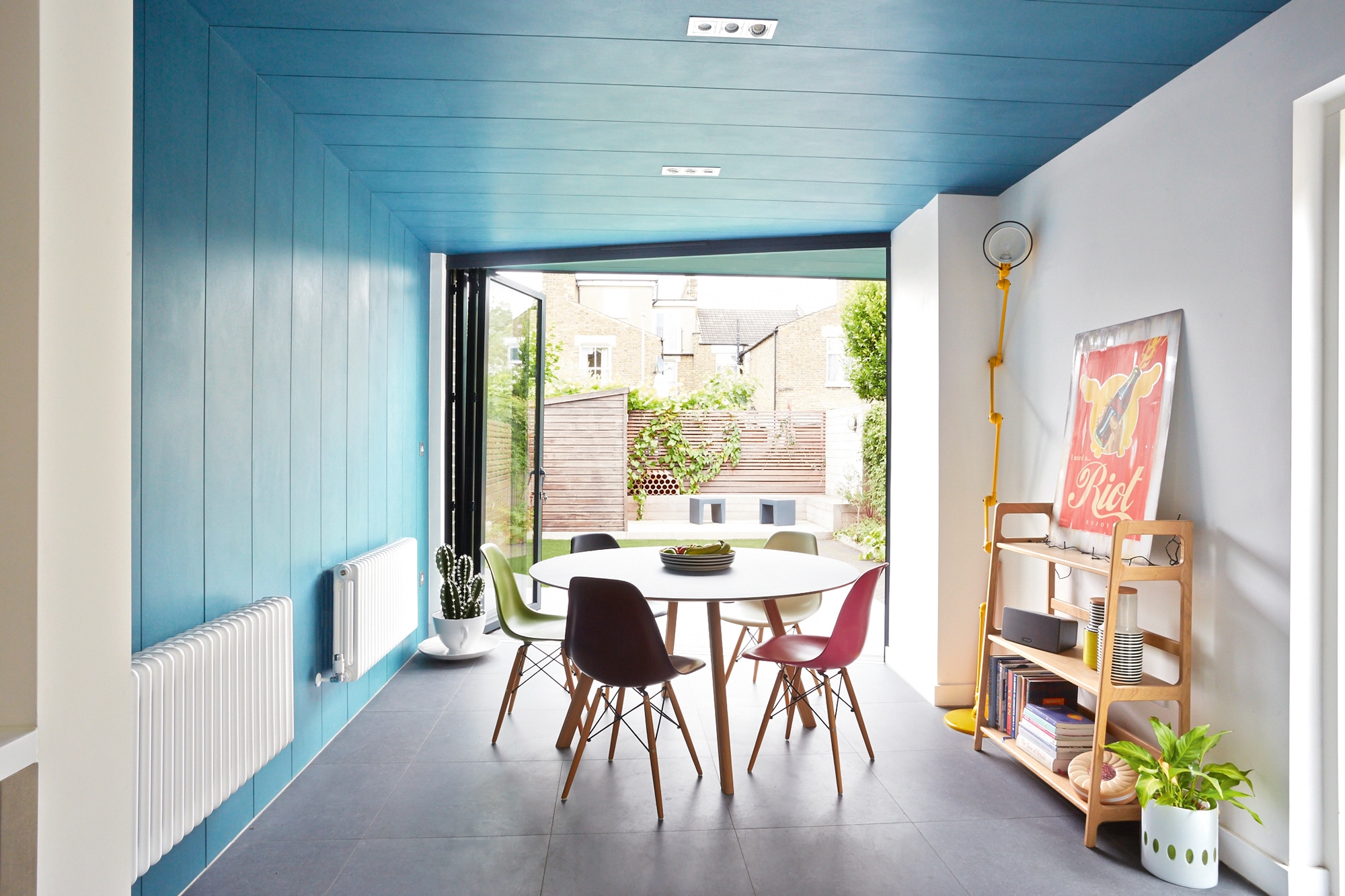
The design is a Sunflex SF55 three-panel aluminium corner bifold, with a low-threshold track, from IDSystems
Most bifolds are specified with external hinging, leaving the interiors clear for you to use as you wish and avoiding drips on your flooring if you open the doors after rainfall.
In some cases, it might be better to have the doors hinging on the internal side of the track. For instance, if you are planning an extension that runs into a very small garden, then units opening outwards may not be the best option for you (as this would take up precious external floor space).
In windy areas you’ll want to make sure the panels stack on the inside – strong gusts could damage the tracking system.
Bifold door costs are generally quoted per panel. Prices start from around £900 per panel for an mid-range system, but expect to pay £1,600+ per panel for a top-end product.
Sliding doors
Sliding doors are ideal for looking over stunning vistas from the comfort of a cosy home, as their thin frames maximise the view even when your doors are shut.
“Sliding doors often look better than bifolds closed,” says Steve. “The large panels and minimal framework facilitate virtually uninterrupted views.”
The downside is that you won’t be able to open the entire run, as the size of the panes means a sizeable portion of the aperture will always be closed. “A triple track system can give you a clearer aperture,” says Steve. “The latest models can even allow your sliding doors to open up to 75%.”
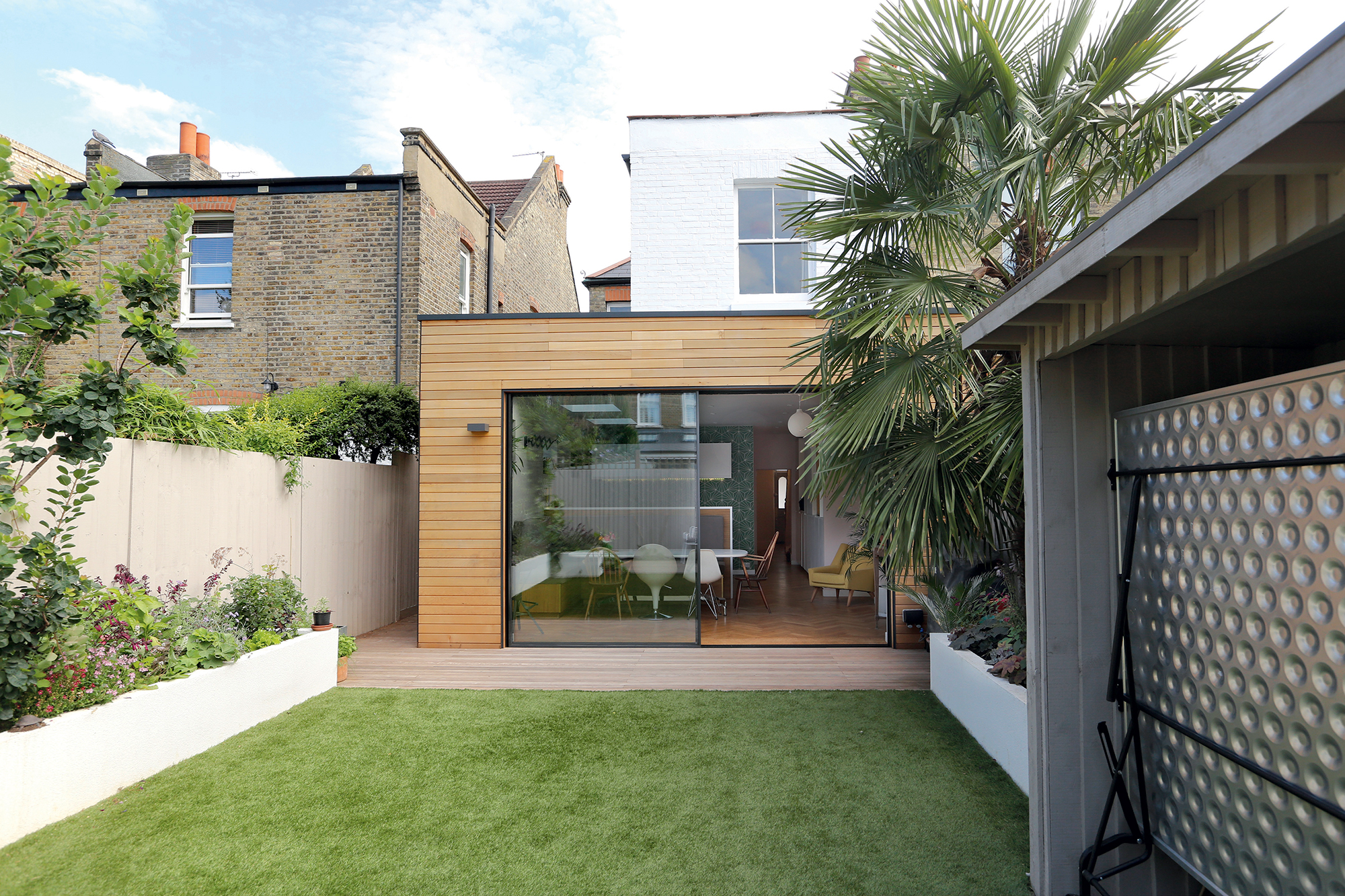
The UberSlide model from Kloeber offers minimal sightlines and unadulterated views towards the garden, while taking up little floor space in this timber clad extension
In terms of performance, both sliders and bifolds are robust and provide similar levels of insulation. “Sliding doors just offer that little extra ease when opening,” says Steve. As with any door, it’s important to do your homework before buying – a cheap product is likely to let you down, so make sure you use reputable suppliers and tried-and-trusted systems.
“If you are looking for a large feature door for your home, don’t scrimp and save,” says Matt. “It’s always a good idea to consider triple glazing or a high performing double glazed unit. Thermal and weather testing reports should be available from reputable companies selling glass doors.”
As a rule of thumb, sliding door costs should be slightly cheaper than bifolds. That’s because much of the cost of bifolds lies in the framing and mechanisms. Expect to pay around £800-£1,200 per linear metre for a good sliding door system.
Pocket doors
Effortless to manoeuvre, these sliding doors recess fully into the wall, practically disappearing from your sight. Each sash needs its own track (60mm deep), so for a three-panel aperture, you’ll need a pocket of 180mm, which will influence the overall depth of the external walls.
The obvious downside with this type is that you are walling up what could have been part of the glazing, so you’ll be drawing less light into your home.
If this is the style for you, then it’s best to plan in advance. Pocket doors are easier to integrate into new walls, but do consider if it’s worth taking up precious floor space. Prices will vary depending on size, spec and whether you are installing them in an existing wall. Expect to pay from £1,000 for the door and mechanism.
Read more: A Self-Builder’s Guide to Pocket Doors
Another option with sliding doors is to go for an extended track, which literally extends beyond the perimeter of the building and out into the patio area. This can allow you to completely open up the run; although it won’t come cheap and, clearly, it’s only workable for very large gardens.
Pivoting doors
A neat alternative for smaller openings, pivot doors can provide a distinguished connection to your garden when open, as well as allowing for great views when closed.
The minimal frames will give your home a sleek finish and the novel mechanism – the door swings around an upright axle – will add wow factor. You could think of pivot doors as a modern alternative to French doors.
However, this may not be your go-to design if you’re often in and out of the house. “Most glazed pivoting doors are actually manufactured as windows,” says Rebecca. “They are not tested for high traffic use and, therefore, should not be used as a main entrance to the home.”
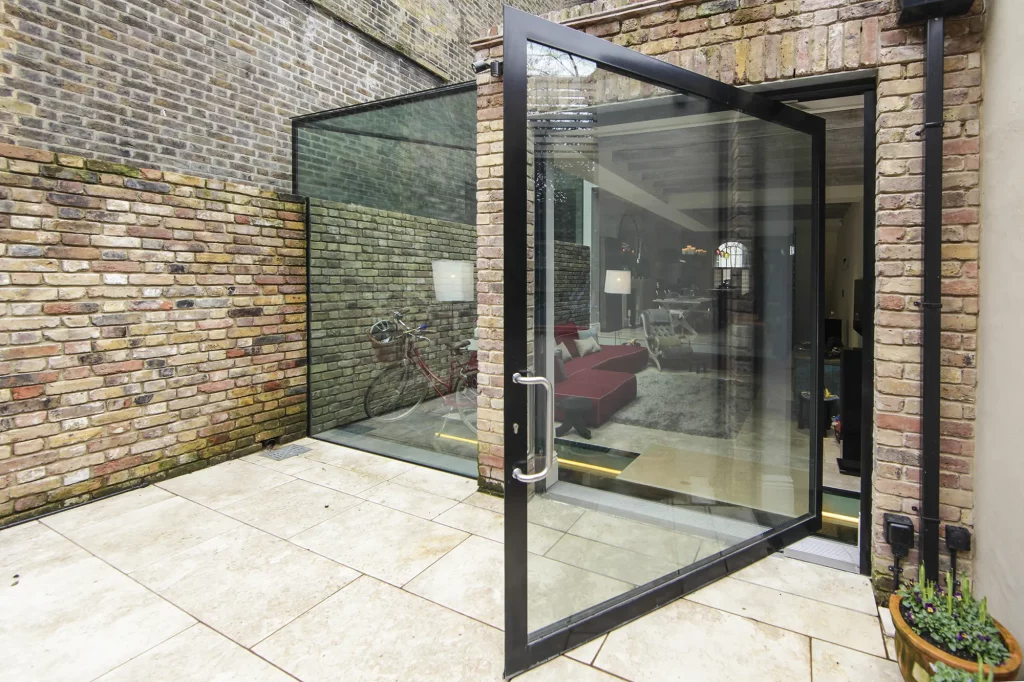
A large pivot door from Maxlight creates a wow-factor entrance to this stunning glazed extension
When choosing a pivoting design for garden access, ensure it includes a hold-open and self-closing system to allow ease of use. Another key consideration is making sure there is no water ingress.
“Pivot doors are the least watertight option,” adds Rebecca, who says looking for a retracting magnetic seal at the base could help. “When the door is closed, magnets in the pivot leaf attract the seal upwards, thereby creating a tighter environment.”
Frame materials for glazed doors
After figuring out which design works best for your scheme, you should think about what the frame is made of, too. This will have an impact on budget, aesthetics, and overall performance. “Different materials will have different thermal properties,” explains Matt.
The main options out there are PVCu, timber, aluminium and alu-clad composite.
PVCu is a low-maintenance and budget-friendly option for glazed doors. They need a bit more material to create a robust frame, so will have thicker sightlines than other systems. Traditionally, they’re considered best for small openings, although companies like Internorm provide high-quality reinforced PVCu and aluminium-PVCu solutions that can span wide distances.
Aluminium framing offers a high strength-to-weight ratio, making this a fantastic option for minimising the amount of framing and delivering big glazed door runs. The powder-coated frames are ultra low maintenance and available in a huge range of colour finishes, and can be thermally broken to achieve good insulation performance.
Timber delivers natural warmth and texture, plus it’s available in a wide selection of factory-painted colours. Wood is a natural insulator, which can give these doors the edge in energy performance. In the medium-term, they’ll need some maintenance – expect to recoat every few years. The framing is typically a touch narrower than PVCu; and slimmer versions are becoming available that can rival aluminium.
Alu-clad glazed door systems are typically at the top-end in terms of cost. That’s because they combine two materials: a core of either engineered timber or PVCu, wrapped with aluminium on the external face. Alu-clad timber is probably the best-known option, providing the character and innate insulation qualities of wood internally with an aluminium finish for easy upkeep.
Which glazed door type should I choose?
Whichever design fits best with your home’s architecture and lifestyle, the addition of glazed doors will dramatically improve your living space.
Each system has its own pros and cons. French doors are fantastic for smaller openings, for instance, but if you want a more modern style on a compact aperture, you could consider pivot or even bifolds.
Sliders are a go-to choice for wide spans where you want to maximise views. Meanwhile, bifolds remain hugely popular, the framework is getting slimmer and they offer fantastic flexibility thanks to the ability to include a master access door.
Whereas large expanses of glass were once reserved for Grand Designs-style projects, glazed door systems have become increasingly affordable for the average self builder and renovator.
“What were once unrealistic designs are now viable prospects,” says Steve. “We’ve noticed a real rise in people turning to these types of products as a way of maximising space.”
Top image: This house extension by Plus Rooms features Art Deco-style steel French doors
This article was originally written in October 2019 and significantly updated on 22nd April 2022.
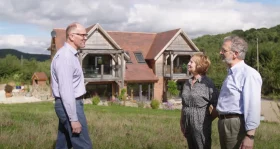































































































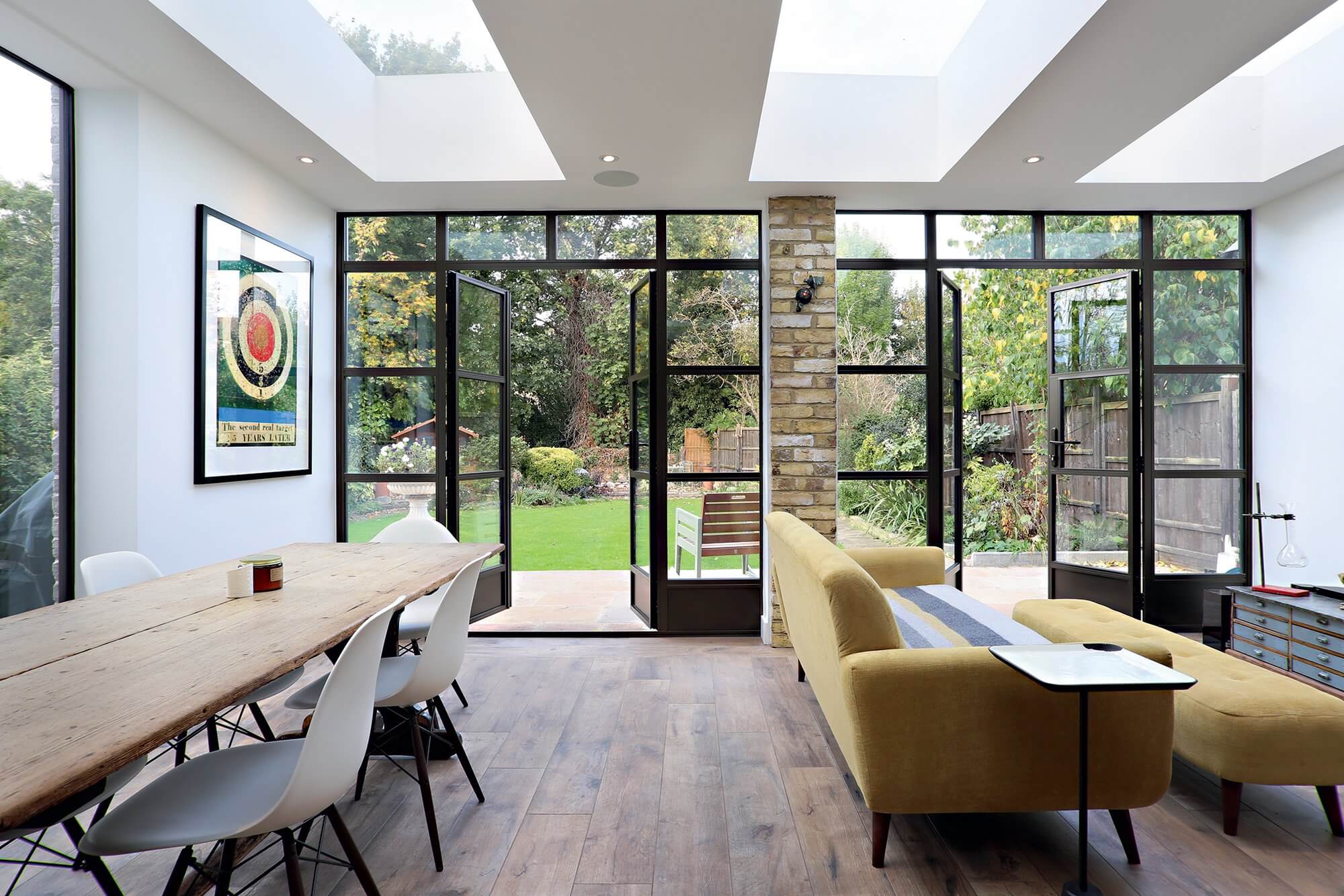
 Login/register to save Article for later
Login/register to save Article for later

